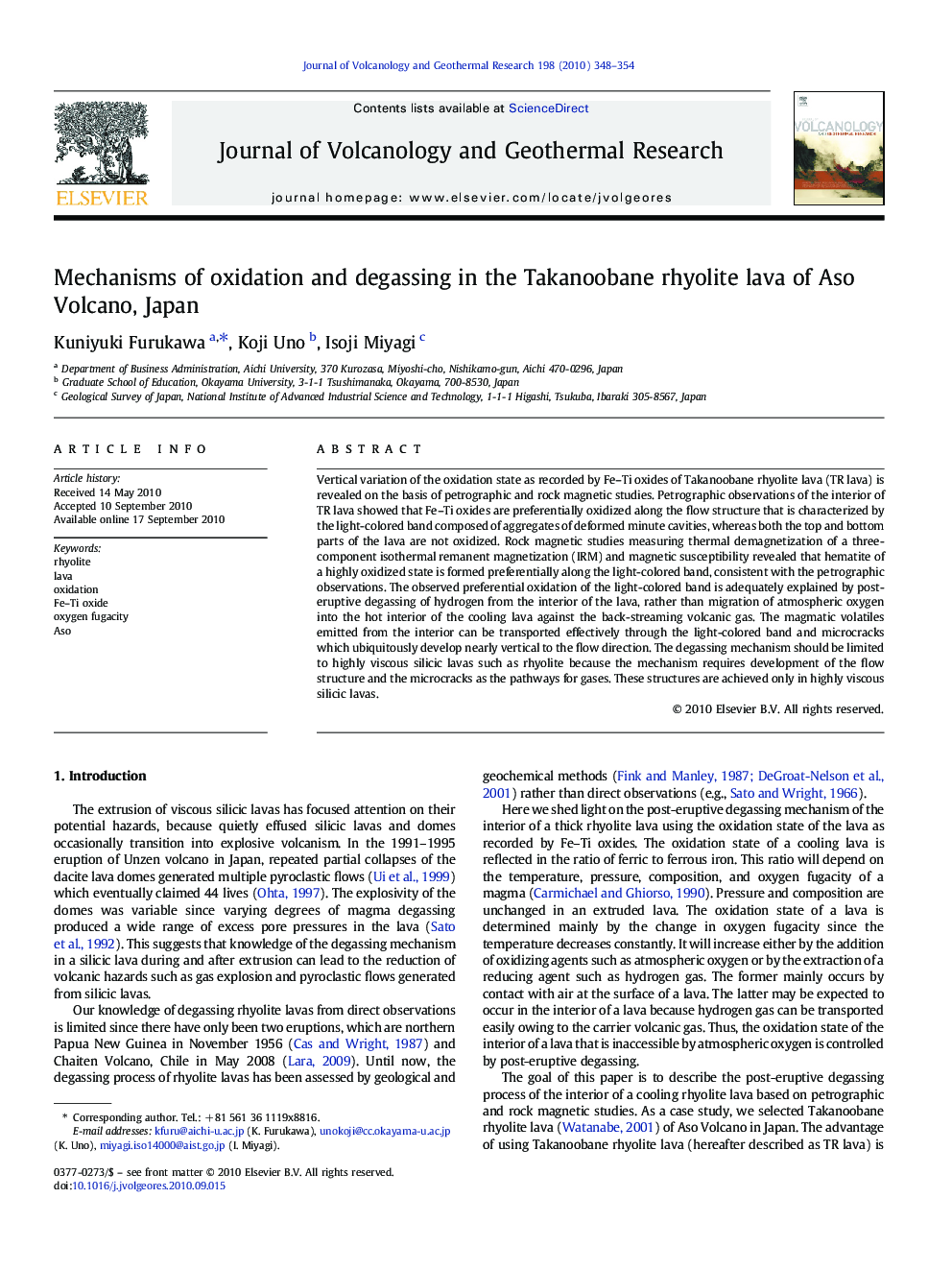| Article ID | Journal | Published Year | Pages | File Type |
|---|---|---|---|---|
| 4714171 | Journal of Volcanology and Geothermal Research | 2010 | 7 Pages |
Vertical variation of the oxidation state as recorded by Fe–Ti oxides of Takanoobane rhyolite lava (TR lava) is revealed on the basis of petrographic and rock magnetic studies. Petrographic observations of the interior of TR lava showed that Fe–Ti oxides are preferentially oxidized along the flow structure that is characterized by the light-colored band composed of aggregates of deformed minute cavities, whereas both the top and bottom parts of the lava are not oxidized. Rock magnetic studies measuring thermal demagnetization of a three-component isothermal remanent magnetization (IRM) and magnetic susceptibility revealed that hematite of a highly oxidized state is formed preferentially along the light-colored band, consistent with the petrographic observations. The observed preferential oxidation of the light-colored band is adequately explained by post-eruptive degassing of hydrogen from the interior of the lava, rather than migration of atmospheric oxygen into the hot interior of the cooling lava against the back-streaming volcanic gas. The magmatic volatiles emitted from the interior can be transported effectively through the light-colored band and microcracks which ubiquitously develop nearly vertical to the flow direction. The degassing mechanism should be limited to highly viscous silicic lavas such as rhyolite because the mechanism requires development of the flow structure and the microcracks as the pathways for gases. These structures are achieved only in highly viscous silicic lavas.
Research highlights► Our knowledge of degassing rhyolite lavas from direct observations is limited. ► The oxidation state of the interior of a lava that is inaccessible by atmospheric oxygen is controlled by post-eruptive degassing. ► We revealed vertical variation of the oxidation state of Takanoobane Rhyolite lava. ► Petrographic and rock magnetic studies showed the flow structure is preferentially oxidized. ► It suggests that the flow structure functions as pathways for post-eruptive degassing.
